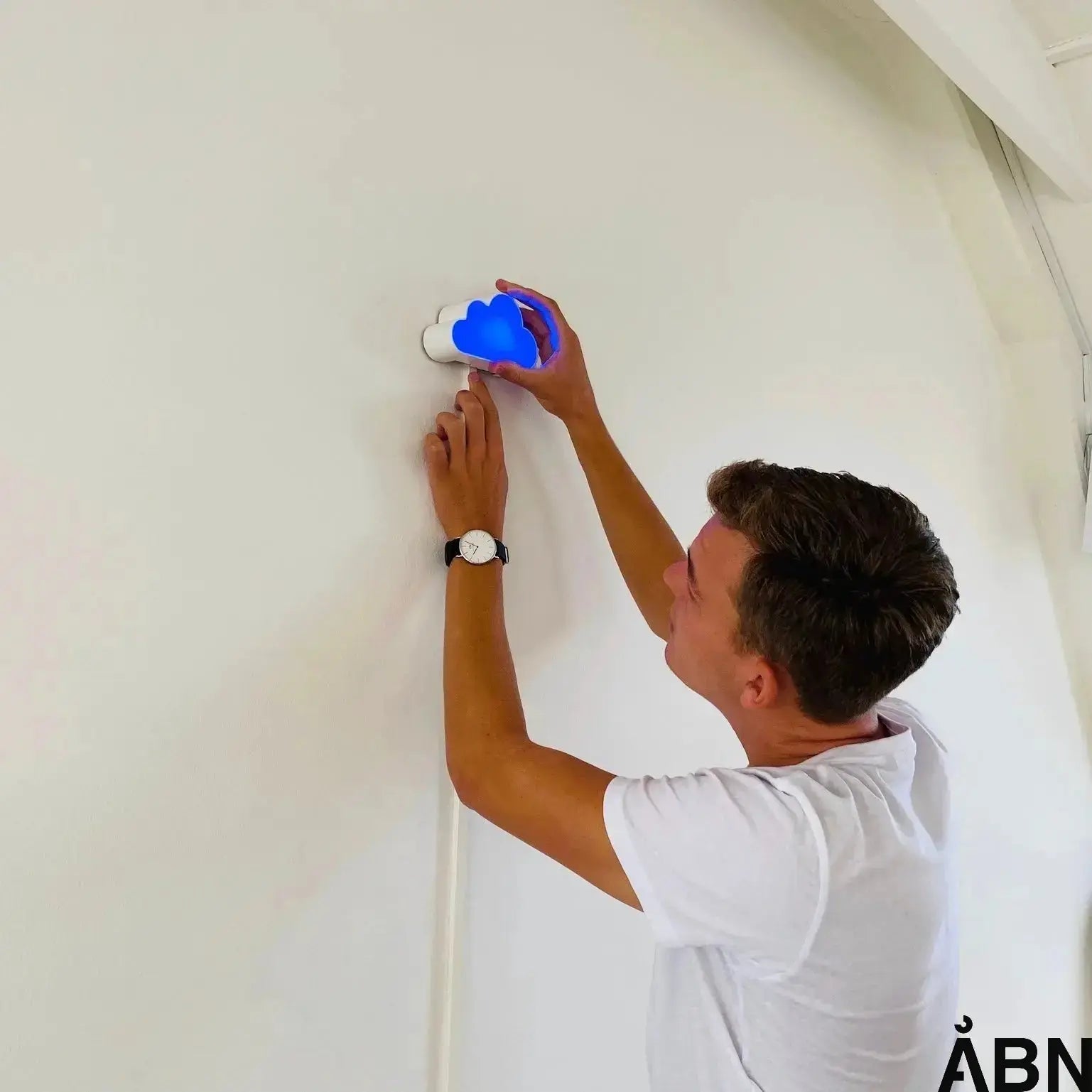How to avoid condensation on your windows
Have you ever woken up to dewdrops on the inside of your windows – or maybe even small puddles on the windowsill? Condensation on windows is not just a cosmetic problem. It is a signal from your indoor climate, and it requires attention. For facility managers, institutional leaders and parents who want healthy environments, it is important to understand why condensation occurs – and how to avoid it.
In this article, we delve into the causes of condensation on windows, what it means for the health and well-being of the building – and how you can act proactively. We guide you with practical advice and show how technology and behavioral change can be the key to a better indoor climate.
What is condensation on windows – and why does it occur?
Condensation occurs when warm, moist air hits a cold surface – such as a window. The water vapor in the air condenses and turns into small water droplets. This happens especially in the winter months, when the temperature difference between outside and inside is greatest.
Interior condensation: A sign of imbalance in the indoor climate
Internal condensation – i.e. fogging on the inside of the window – is the most common problem. According to the Bolius Knowledge Centre, it is often caused by a combination of high humidity and poor ventilation. Moisture comes from everyday activities such as cooking, washing clothes and, not least, people – we ourselves give off moisture through exhalation and sweat.
The problem typically occurs when:
- The indoor climate is too humid.
- The windows are poorly insulated or very cold
- The building has become too tight after replacing windows
This is especially a problem in schools, institutions and office buildings, where many people stay in a small space – and where the ventilation is not always adapted to the actual use.
Exterior condensation: A sign of health
External condensation – i.e. fog on the outside of the window – can seem worrying, but it is actually a good sign. It means that your windows are insulating effectively. When the outer window gets cold at night and the air warms up quickly in the morning, fog forms. According to Vindunor, this is especially common on new energy windows with high insulation.
However, external condensation can be reduced by establishing overhangs or planting that provides shade - but this is not necessary as it does not damage the building or the indoor climate.
What does condensation mean for health and buildings?
Interior condensation isn't just annoying – it can lead to serious problems:
- Mold: Damp surfaces create ideal conditions for mold growth. This can be harmful to your health and cause symptoms such as headaches, fatigue and respiratory problems.
- Rot and moisture damage: Persistent moisture around window frames and sills can lead to the breakdown of materials and often require expensive repairs.
- Poor well-being: A humid indoor climate affects both concentration and well-being – especially for children and the elderly.
For schools, daycare centers and offices, it can mean increased sick leave, lower productivity and poorer learning environments. That's why it's important to take condensation seriously and act proactively.
How to avoid condensation on windows
Fortunately, there are many ways to reduce or completely avoid condensation on windows. It involves both behavior, construction techniques and technology.
1. Air out – but do it right
The classic recommendation is to air out several times a day with a draft for 5–10 minutes. This helps to remove humid air and bring in dry air. But in practice, this is not always easy – especially in institutions and larger buildings, where open windows can be a safety risk or create drafts.
Here, mechanical ventilation can be a solution. A ventilation system can ensure constant air exchange and keep humidity down – but it requires correct dimensioning and maintenance.
2. Monitor your indoor climate with technology
It is difficult to improve something you cannot see. That is why it is crucial to have insight into humidity, temperature and CO₂ levels in the building. At ÅBN, we have developed the Sky – an intuitive sensor that measures and visualizes the indoor climate in real time. With the Sky, both staff and management can follow how the indoor climate develops during the day – and take action when necessary.
The cloud makes it possible to work data-based with ventilation, and it supports a cultural change where indoor climate becomes a shared task. You can read more about this approach in our documentation on behavior change and indoor climate .
3. Adapt ventilation to new windows
If you have had your windows replaced, you may experience more condensation than before. This is because new windows are much tighter – and therefore no longer allow moist air to escape naturally. According to Energihjem.dk , it is important to adapt the ventilation to the new, tight climate shield. This may mean that you need to upgrade or adjust your ventilation system.
4. Use shade and overhangs to prevent external condensation
Although external condensation is not a problem, it can be a nuisance – for example if it blocks the view. Here it is advantageous to establish overhangs or plantings that shield the window from direct sunlight. This reduces the temperature difference and thus the formation of dew.
5. Keep an eye on moisture sources
Are there a lot of plants, aquariums or drying racks in the room? These can significantly increase humidity. Consider moving them to better ventilated rooms, or use dehumidifiers if necessary.
Condensation and behavior: A joint effort
Indoor climate is not just a technical issue – it is also about people and habits. In many institutions and offices, it is unclear who is responsible for airing out, adjusting thermostats or opening ventilation dampers. That is why ÅBN is working to make indoor climate visible and understandable for everyone – so that it becomes a shared task.
We believe that data creates dialogue. When children, employees and managers can see how their behavior affects the indoor climate, new habits and better decisions are created. It's not about pointing fingers - but about giving everyone a common language for healthy air.
When should you seek help?
If you experience persistent condensation, mold, or poor indoor air quality, it is a good idea to get a professional assessment. It may be necessary to measure humidity, review ventilation, or analyze the building's tightness and insulation.
At ÅBN we are ready to help









